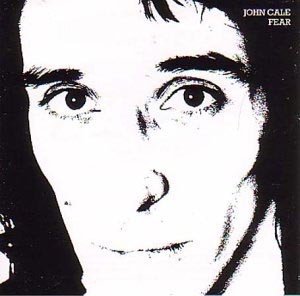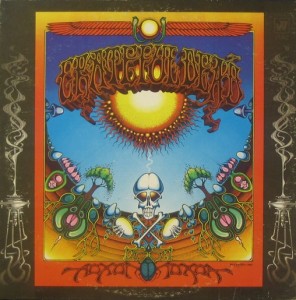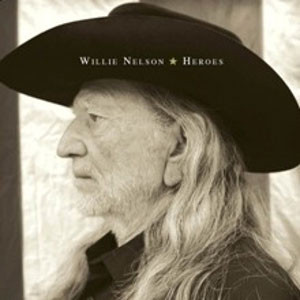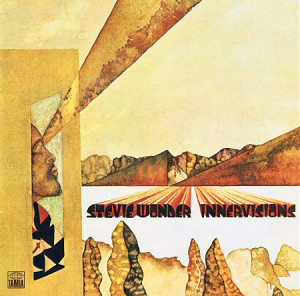Link to an article by Slavoj Žižek:
Month: March 2015
John Cale – Fear
John Cale – Fear Island ILPS 9301 (1974)
John Cale’s music, like most great art, is defined by subtlety. Unfortunately, subtlety is lost on most listeners and many critics. His classical background introduced fresh ideas to rock and roll. So much is made of his association with the origins of punk and with the avant-garde that his range is often overlooked, due to his disregard for divisions between highbrow and lowbrow forms. His music is unique in its own way and difficult to precisely classify.
The guitar plays a central role on Fear. With the combined efforts of Brian Eno and Phil Manzarena, Fear has frequent bouts of guitar fireworks (Eno would electronically process Manzarena’s guitar solos). Simultaneously accentuating the internal textures of the guitar (like John Cage could do for the “prepared” piano) he blends the guitar into the overall collection of sounds. Manipulation of guitar tunings and chord structures make this unique. While first listening to the album, it’s not easy to say “that guitar is tuned differently!” But it becomes obvious that other music doesn’t sound quite the same. Other performers include Andy MacKay, Fred Smith, Judy Nylon, and Richard Thompson. Superb performances by the Cale’s studio band fully realize his visions. Demanding and all-encompassing compositions come to life through the superb musicians that bring just enough life and improvisational character to the recordings.
Fear has some of Cale’s most concise pop songs. “Buffalo Ballet” is a ballad of railroads on the Great Plains. Cale’s lyrics were never that interesting and Fear is hardly an exception (which is what made Lou Reed/John Cale collaborations so powerful). Cale is a more a composer than lyricist. He tells his stories with music, not words. Lyrics are just a minor part of the grand arrangements. All too often lyrics are used as the sole basis for determining the “quality” of an album. John Cale provides a counterargument against such evaluative methods.
Always pushing the limits, Cale’s background covers impressive territory. He performed with John Cage as a pre-teen. Then Aaron Copeland arranged for a scholarship for the Welsh-born Cale to study in the states. Cale moved into the avant-garde cadre stateside, including a much-heralded stint with The Theater of Eternal Music (a/k/a La Monte Young’s Dream Syndicate). His move to rock and roll began when he and fellow Dream Syndicate member Angus MacLise joined Lou Reed to promote the single “(Do the) Ostrich” as the band The Primitives. Out of the Primitives grew The Velvet Underground. When Lou Reed felt threatened by John Cale’s abilities, Cale left the Velvets. Originally unreleased Velvet Underground recordings like “Stephanie Says,” “Ocean,” and “Ride Into the Sun” point to the direction Cale wanted the group heading. Those demos and outtakes issued years later show subtle complexities very similar to the music on Fear.
This music is almost punk, but that’s not quite the best descriptor. John Cale was in many ways the godfather of the punk sound (Lou Reed being the godfather of its ideals). Fear was the factor that urged Patti Smith to use Cale to produce her seminal debut album Horses.
If anything, Cale’s immense talent ruined any chance of popular appeal outside the U.K. He so expertly incorporated his experiments, they often seem like pop songs on the surface. But that is hardly the whole truth. “Fear Is A Man’s Best Friend” uses Cale’s distinctive reverse dynamics. A combination of rhythmic and dynamic shifts is substantively the opposite of the traditional pop format; however, the result fits perfectly with a pop aesthetic. Cale’s piano, with the brilliant use of space in the opening bars, features his characteristic choppy, pounding chords.
The only familiar Cale technique largely absent on Fear is the drone. Such a forceful part of his repertoire (even appearing on producing efforts like The Stooges and his film scores), we get slightly altered versions on “Gun” and “Ship of Fools.” Not quite drones, he employs almost pedal tones (a technique J.S. Bach used by repeating a tone while chords change around it) with static chords or straight pedal tones.
“The Man Who Couldn’t Afford to Orgy” reveals Cale’s infatuation with The Beach Boys and Brian Wilson’s heavenly California harmonies. You still get an insider’s views on Warholian episodes with “Ship of Fools.” Always though, the melodies are sweet.
John Cale didn’t have a particularly memorable singing voice, but he had more technical vocal ability than usually credited. He said that one basic motivation of rock & roll is to scream and get paid for it. On many levels, that is a remarkable truthful statement. Cale does move from sweet vibrato to unbridled screams — always executed with precision.
Where Paris 1919 was a mellow portrait of home, Fear collects John Cale’s great rock and roll experiments. Personal revelations, anecdotes, and biographical portraits give Fear a well-rounded scope. Cale’s experience as a producer made this album possible. Like a grand opera, Cale finds the perfect use for each element. While his uniqueness may have hindered his popular appeal, it certainly made for great music. In my mind, John Cale is a tremendously influential musician. Always in his own way. Like Eric Dolphy (the jazz musician), the right people knew he was great, but most people miss his greatest innovations.
On a personal level, I find John Cale remarkable. He devoted time to the high & “proper” classical arena, and to “dirtyass rock and roll” (to reference the song from Slow Dazzle). In a sense, he was never fully accepted by either camp. Some rockers considered him too elitist coming from a classical background, while the classical people though he wasted time making stupid pop music. But there are many examples that show how both sides are wrong. John Cale made great music. The discussion should really end there. He was never properly accepted as a genius. Musical Renaissance men like Cale face a bias, but only from the ignorant. I respect a man who can continue to create his own art despite little public acceptance. He was right and the world wasn’t. Unlike Thelonious Monk (who chose to play different than everybody else in public, but privately played conventional stride styles), John Cale was different. He just went with his instincts.
Grateful Dead – Aoxomoxoa
Grateful Dead – Aoxomoxoa Warner Bros.-Seven Arts WS 1790 (1969)
Looking back, this album is a big disappointment compared to the great albums Anthem of the Sun before it and Live/Dead after. It’s a shame because this was recorded with arguably the best lineup the band ever had. Every time I listen to this disc a single word comes to mind: overproduced. The Dead seem so enamored with building up layers upon layers of sound in the studio that some of the songs get lost amongst it all. Still, “St. Stephen” is a good song, even if it sounds better recorded live. Perhaps the most effective song here is “Doin’ That Rag”, which to my knowledge never made it into regular rotation in live shows.
Willie Nelson – You Don’t Know Me: The Songs of Cindy Walker
Willie Nelson – You Don’t Know Me: The Songs of Cindy Walker Lost Highway B0006079-02 (2006)
A nice tribute to the songs of Texan Cindy Walker, who passed away just over a week after this album was released. Willie plays this material with a sophisticated air, with a lively fiddle laced throughout that nods to the leading figure of western swing Bob Wills (who co-wrote a number of these songs with Walker). In his autumn years Willie has so often seemed to be locked into a daze, churning out recordings with regularity but rarely straying from a kind of detached and — let’s face it — formulaic delivery. But You Don’t Know Me ups the ante a bit. Nelson seems to connect with these tunes and his whole band brings more energy to them than usual, even though this has a light, easy listening touch. Count this among Nelson’s more successful late-career outings.
Willie Nelson – Heroes
Willie Nelson – Heroes Legacy 88691960482 (2012)
After a few albums of more old-fashioned, nostalgic country, Heroes has Willie Nelson back making music with a more contemporary feel. His son Lukas is prominently featured. Lukas plays guitar with a smooth sound, inflected with classic rock sensibilities. There are a lot of guest vocalists. This one is pleasant if unremarkable, though it might have been more than that without all the guest vocalists. Also, Lukas Nelson may be a decent guitarist, but a little more of Willie and Trigger would have been nice. In all, Willie is making more of an effort to seem relevant, though he also seems to be deferring a bit too much to his label (back on Columbia). This is nondescript contemporary country, and, as such, is only marginally interesting and too unambitious to make it stand out. Its best quality is that clearly a lot of effort went into recording, so this is polished up to a degree few albums can afford to do.
Paul Craig Roberts – The Neoconservative Threat To World Order
Link to an article (really transcripts of speeches) by Paul Craig Roberts:
John Fahey – Your Past Comes Back to Haunt You
John Fahey – Your Past Comes Back to Haunt You: The Fonotone Years [1958-1965] Dust-to-Digital DTD-21 (2011)
A collection of material recorded for Joe Bussard‘s Fonotone label in Fahey’s early years. Fonotone billed itself as the last label issuing records in the old 78 RPM format. There is a documentary about Bussard, a well-known vintage record collector, were he mentions buying old 78s off people and paying them a “fair price,” in other words he attempts an apology for paying these folks far less than what he thought the records were worth. Anyway, as recounted in the opening interview on this set, Fahey would go over to Bussard’s place and Bussard would give him booze and let him take records from his pile of duplicates. This was enough incentive for Fahey to swing by and cut the recordings collected here.
Compared to Fahey’s recordings on his own Takoma label, most of these Fonotone ones are more traditional blues and folk, without the more experimental edge Fahey elsewhere explored. One thing that should probably be pointed out is that some of these were released under an alias, and Fahey does some kind of “voice acting” that is best described as racist minstrelsy. Aside from that, though, the guitar playing is quite good on almost all the cuts.
Things sort of modernize a bit to resemble Fahey’s Takoma recordings on some of the 1962 cuts. However, compared to the Takoma recordings some of these sound like only rehearsals. Some terrible vocals and accompaniment also appear. The more modern material from 1962 onward takes on a noticeably darker emotional tone. The last disc, recorded mostly in 1965, is the best. Fahey had grown tremendously as a guitarist, and he was now playing in his own unique, distinct style.
Syrian Conflict Has Underlying Links to Climate Change, Says Study
Link to an article by Thalif Deen:
“Syrian Conflict Has Underlying Links to Climate Change, Says Study”
Stevie Wonder – Innervisions
Stevie Wonder – Innervisions Tamla T 326V1 (1973)
Stevie’s best album? Probably. What Stevie Wonder brought to music in the early-to-mid-Seventies was pretty amazing. He carried forward the sweet vocals of Motown, or course, but he also added in the rough edges of Detroit rock with just a hint of psychedelia. This was after all the city of Funkadelic, MC5, Alice Cooper. He also could make the beats heavier and funkier, thanks to his innovative programmed Moog bass. But he did all that while also managing to pass for a “singer-songwriter”, as was still a popular movement at the time. To that end he could put forth brilliantly astute and biting social commentary like “Living for the City” and have it be totally convincing. Yes, he could do that and still drop in a few ballads. Bringing it all together, it didn’t quite sound like the sum of its parts. It was something a little different and better than that.
Japhy Wilson – Counting on Billionaires
Link to an article by Japhy Wilson:





![Your Past Comes Back to Haunt You: The Fonotone Years [1958-1965]](http://rocksalted.com/wp-content/uploads/2015/03/yourpastcomesbacktohauntyou-300x300.jpg)
